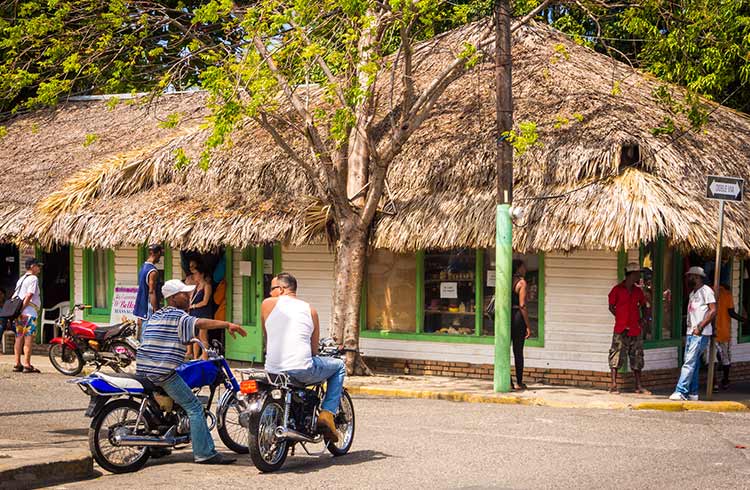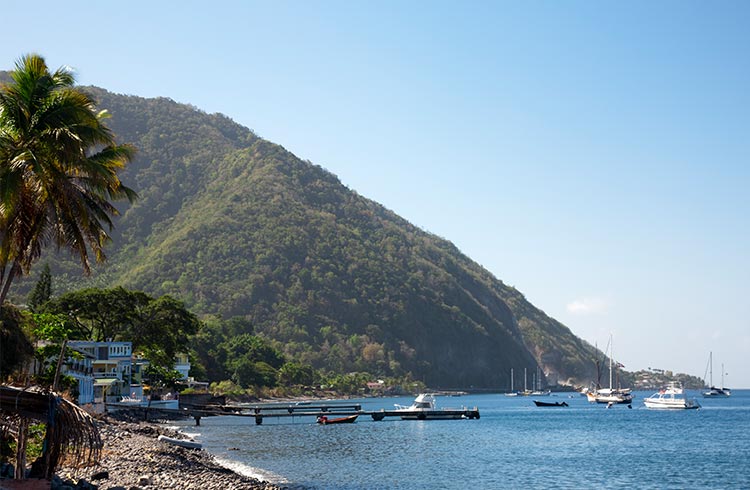Driving in Dominica: Tips & Advice for Safer Road Travel
With narrow winding roads, steep drops-off and limited traffic signs, driving in Dominica is a challenge. Here's what you should know to get around safely.
 Photo © iStock/holgs
Photo © iStock/holgs
Driving on the island of Dominica is not for the faint of heart. Of the 484 miles (780km) of highways on Dominica, nearly half are unpaved. Cars are driven on the left-hand side.
Before you hire a car and hit the road, these are the things you need to know to stay safe.
- Traffic lights and road signs
- Honking in Dominica
- Beware of narrow roads
- 8 important road safety tips for Dominica
Traffic lights and road signs
Stoplights and road signs are rare on most roadways, sidewalks even rarer, and many roads are still not equipped with two proper lanes to let both sides of traffic pass at the same time. Road surfaces are poor and don't have much grip, so driving in rainy conditions is very difficult. Sizeable potholes are plentiful and the asphalt is not intact on many roads. Blind corners and hairpin turns are abundant.
Honking in Dominica
It's customary on Dominica and other islands to honk to alert another vehicle or pedestrian of your impending arrival. This is especially crucial at night, as many roads aren't well-lit even in urban areas. Add to this the fact that seat belts aren't always worn, and you have some potentially fatal possibilities, especially if you aren't used to driving in a place.
Beware of narrow roads
The narrow, winding roads around the volcanic island don't normally have guardrails, and what lies on the other side is often a pretty straight drop off into nothingness. These steep drop-offs are often hidden by vegetation, so the unknowledgeable driver will have no clue that it buffers a sheer cliff. If driving yourself, the route from the airport to Roseau is especially nausea-inducing, with sharp curves all through a mountain. Tourists are involved in accidents on this roadway often. Landslides can also occur after heavy rains, and while there may be warning signs, it is near impossible to see them at night.
A recent pair of travellers to Dominica said they encountered difficulty driving up the Aerial Tram. The road was under construction, so conditions were worse than normal and only one lane of traffic could go by. They wound up stuck between several large buses and had to drive into and then out of a muddy section on the side of the road.
8 important road safety tips for Dominica
- Due to the lack of traffic signals and signs, many cars and public transport vehicles simply stop at whim
- Minibus, or taxi; many stop suddenly and drive into traffic without a signal. Move over if possible when a large truck approaches, as its sheer size will force a car off the road
- Speed limits, shown in kilometers, are non-existent on country roads, and roads outside cities are largely unlit and signs are poor
- Bring a map, or ask for directions when driving here - the Dominican people will be happy to help, usually
- If you get in an accident, stop your car wherever there is a safe area and call police
- If you do rent a car on your trip to Dominica, a compact vehicle or small 4x4 are your best options; the latter will help when driving in mountainous areas and get you unstuck in muddy conditions
- If you'd rather be carted around, mini-buses, indicated by a plate starting with an H, travel from Roseau to most villages. Prices are fairly reasonable
- There are no rail lines on the island. If you feel like taking a day trip away from the island, ferries go between Dominica and Guadeloupe, St. Lucia and Martinique.
For more travel safety tips in Dominica, read about crime and personal safety before you go.
Related articles
Simple and flexible travel insurance
You can buy at home or while traveling, and claim online from anywhere in the world. With 150+ adventure activities covered and 24/7 emergency assistance.
Get a quote
No Comments